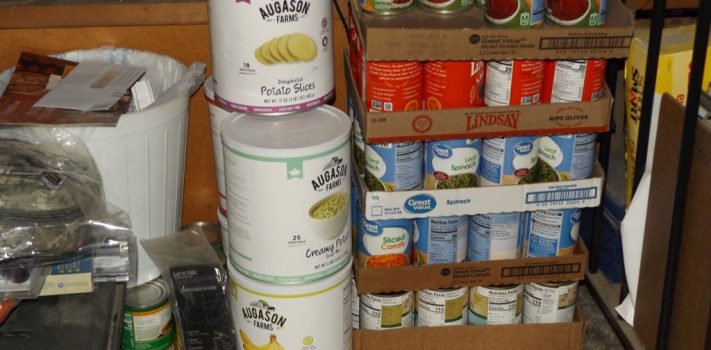In this brief article, I will discuss some issues with stored food.
Pests
Insects – There are many sources of information on how to store grains and beans using dry ice, nitrogen or oxygen absorbers so I will not duplicate that here. I will add that if you use mylar bags, get 12 mil or thicker. Lower mil thicknesses are problematic. I know this from personal experience. Thinner ones tear, puncture, and seal poorly.
Rodents – Get two barn cats.
Botulism
Canned food – Botulism from canned food is also addressed elsewhere, but I will remind the reader of the following symptoms that would appear 18-36 hours after ingesting the toxin.
- Difficulty swallowing
- Muscle weakness
- Double vision
- Drooping eyelids
- Blurry vision
- Slurred speech
- Difficulty breathing
- Difficulty moving the eyes
- Vomiting
- Nausea
- Stomach pain
- Diarrhea
Signs and symptoms in an infant might include:
- Constipation
- Poor feeding
- Drooping eyelids
- Pupils that are slow to react to light
- Face showing less expression than usual
- Weak cry that sounds different than usual
- Difficulty breathing
The botulinum toxin is destroyed by boiling for 5 minutes. Other than in infants and the immunocompromised, the spores (which require pressure canning to kill) do not seem to present much danger. Since treatment for the botulinum toxin would require specific drugs and months of rehabilitation, in SHTF, it would likely be lethal, so consider boiling your home canned food before eating.
Aflatoxins
Now comes some information you may not know.
Aflatoxins are toxins created by mold. Similar to botulinium spores, adults are more resistant than children.
Acute toxicity results when someone consumes a high level of aflatoxins in a very short time. The most common signs and symptoms are:
- Nausea
- Yellowing of skin and sclera (icterus)
- Itching
- Vomiting
- Bleeding
- Abdominal pain
- Lethargy
- Edema
- Convulsions
- Coma
- Death
Chronic toxicity occurs through consuming small amounts of aflatoxins over a prolonged period. Chronic exposure to aflatoxin can result in the following:
- Impaired growth and development, especially in children
- Immunosuppression
- Hepatocellular carcinoma (weight loss, abdominal mass, anorexia, vomiting, nausea, bleeding, psychosis, etc.)
Maternal exposure to aflatoxin is associated with a higher occurrence of preterm birth and late-term miscarriage.
There are test kits for aflatoxins (aflacheck) but a 365nm ultraviolet light* will cause kojic acid (a product of molds) to glow yellow-green.
The uvBeast V3 365nm Mini is a small light that may work well. While you may get false positives, you are very unlikely to get false negatives.
Don’t forget to test your stored animal feed for aflatoxins. If your animals eat aflatoxins, it will be in their tissue and you can get it by eating your animals or drinking their milk.
Histamine
Next comes histamine. Histamine is a neurotransmitter that is associated with allergic reactions (and if high enough, schizophrenia.) The canning process increases histamine in foods, with the greatest source of histamine being in canned fish. If you find yourself itching after eating canned food, it may be a histamine reaction. Additionally, citrus foods, while not high in histamine, will cause histamine release.
How did I come to this conclusion? After months of unexplained itching, I found the effects of my consumption of canned sardines (highest in histamine) were being magnified by my daily lemon water drinks. I stopped them both, and the infernal itch disappeared shortly thereafter. There are also probiotics you can take (or culture in a yogurt maker with dairy or carrot juice), that degrade histamine in the gut**.
Finally, histamine is degraded by ascorbic acid, so if you don’t have access to fresh fruits and vegetables, consider stockpiling some vitamin C.
Peace be with you in these challenging times.










